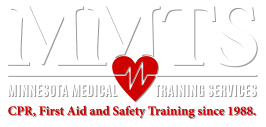In the world of CPR, there’s a fair amount of hearsay and urban myths. Some of this is from what people see in the movies. Other times, it’s just from false information being passed from person to person.
This creates a lot of questions about what CPR actually is, and how it works. A while back, we answered some of the most common questions people have regarding CPR. Today, we’ll answer a few more.
Is Mouth to Mouth Still Used?
As far as CPR history goes, the use of mouth to mouth actually predates timed chest compressions by more than a century. However, many think this technique is outdated, unsanitary, and all around frowned upon.
There’s some reason for this. A few years ago, the American Heart Association issued an announcement saying that hands-only CPR works just as well as CPR with mouth-to-mouth. That’s because the body usually has enough oxygen left in its system to keep the internal organs operating properly.
Ultimately, the heart is the priority in an emergency situation.
That said, mouth-to-mouth is still taught in CPR classes. In the case of near-drowning victims, oxygen is vital, and they may require mouth-to-mouth. Also, if a child collapses, it is more likely due to breathing problems than it is heart problems.
In these situations, and some others, mouth-to-mouth can still increase the chances of survival. That said, it’s recommended you only use mouth-to-mouth if you’ve have professional training.
Which is more important? Breathing or blood flow?
This one is a bit of a trick question. As stated above, keeping the heart beating is more important than adding more air into the lungs. However, after calling for help, the first thing you should do in an emergency situation is to tilt their head back and make sure nothing is blocking their air passage.
But technically speaking, the blood flow gets priority.
Can you break someone’s ribs during CPR?
While you shouldn’t be caving in someone’s sternum (that wouldn’t do much good for the heart and lungs), it’s entirely possibly you may crack or bruise a rib, if not the sternum, while performing CPR. That’s not to say it happens every time.
But you shouldn’t let a fear of injuring someone’s chest prevent you from applying proper pressure. At the end of the day, a fractured rib or two is a lot better than dying because of cardiac arrest.
Am I liable for injury?
All 50 states have what’s known as Good Samaritan laws. Essentially, these protect you from being punished for trying to help someone. Even if you’re not certified to perform CPR, you’re protected. You can learn more about the legalities and liabilities of CPR here.
Do doctors and certified Persons have to perform CPR in emergency situations?
The state of Vermont actually does have a law that requires capable people to respond in CPR. If they don’t, they can be fined. This includes both doctors and those with CPR training.
Otherwise, there is no such obligation.
How Can I Become CPR Certified?
For CPR training, Minnesota residents can sign-up for one of our classes here or contact us directly and schedule a time for us to come to them.
If you have any additional questions about CPR, feel free to ask them below.

